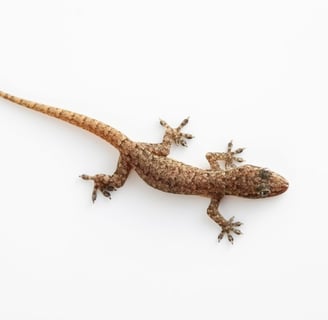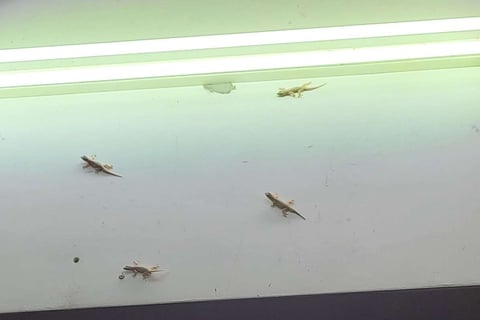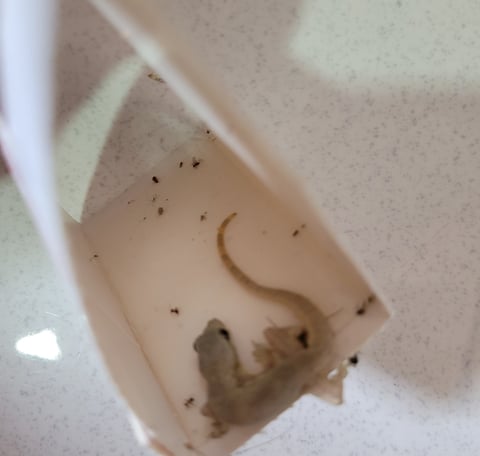How to Get Rid of Geckos
House geckos are a common sight in Malaysian homes, causing nuisance with their droppings. Here're some DIY solutions that you can try to get rid of them!
Chan, H.H.


House geckos are a common sight in Malaysian homes. While they help control insect populations by preying on cockroaches, flies, mosquitoes, and spiders, their droppings can be a nuisance. If you're dealing with geckos in your home, understanding their habits and how to make your home less inviting to them is key.
Do I Need Professional Help? Pest control services typically do not offer gecko removal, as geckos are not considered pests in the traditional sense. They do not pose health risks or property damage like termites or rodents. However, if you’re dealing with an insect infestation that is attracting geckos, professional pest control can help by eliminating their food source.
What You Should Know About House Geckos
What Are House Geckos? House geckos are small, nocturnal reptiles that are often found indoors. Their toes have adhesive pads that allow them to climb effortlessly on walls and ceilings. While generally harmless, their droppings can be unsightly and require regular cleaning.
Why Are Geckos in Your Home? Geckos are drawn to places with abundant food sources. If you frequently see geckos inside, it's likely because your home has an insect problem. They also prefer warm, humid environments with plenty of hiding spots.
Where Do Geckos Hide? Geckos tend to hide in:
Cracks and crevices
Behind cabinets, curtains, and furniture
Around fridges, washing machines, and water heaters
Planters and trash bins


Geckos waiting next to a lamp for flying insects attracted by light
How to Reduce Gecko Presence in Your Home
While it’s impossible to completely eliminate geckos, you can make your home less inviting to them by reducing their food sources and hiding spots.
1. Control Insect Infestations
Since geckos feed on insects, eliminating their food source is the most effective way to reduce their numbers. Professional pest control services can help you eliminate cockroaches, flies, and mosquitoes, making your home less attractive to geckos.
2. Seal Entry Points
Prevent geckos from entering your home by sealing gaps, cracks, and crevices. Installing window screens and door sweeps can also help keep them out.
3. Adjust Outdoor Lighting
White or UV lights attract flying insects, which in turn attract geckos. Switching to warm LED lights can help reduce insect activity around your home.
4. Reduce Hiding Spots
Declutter your home by removing unnecessary cardboard boxes, newspapers, and plastic bags. Regular cleaning can help minimize dark hiding places where geckos and their insect prey thrive.
5. Use Sticky Traps with Caution
Sticky traps can catch geckos, but they are not a long-term solution. Trapped geckos may suffer and die if not checked frequently. If you use sticky traps, be prepared to either dispose of the geckos or release them using vegetable oil to loosen the adhesive.
6. Get A Cat
Cats are natural hunters and can assist in catching geckos. Their innate hunting instincts make them effective at controlling gecko populations.
Repellents: Do They Work?
Many home remedies claim to repel geckos, but their effectiveness is temporary. Strong scents like garlic, essential oils, and coffee grounds may cause geckos to relocate within your home, but they won’t eliminate them.
Do Eggshells Repel Geckos?
A common myth suggests that eggshells scare away geckos, but there is no scientific evidence to support this. Geckos are not deterred by the sight or smell of eggshells.
Cleaning Gecko Droppings
Gecko droppings can carry bacteria, so it’s important to clean them regularly:
Mix vinegar, dish soap, and water (1:1:2 ratio) to create a cleaning solution.
Spray it on the droppings and let it sit for a few minutes.
Wipe with a paper towel or cloth and dispose of it properly.
Final Thoughts
Geckos are a natural part of the ecosystem and help control insect populations. While complete removal is unlikely, taking steps to reduce their food source and hiding spots can minimize their presence in your home. If you’re dealing with an insect problem that’s attracting geckos, professional pest control can help eliminate the root cause.
For expert pest solutions in Johor Bahru, contact Pest Sensei today!


Pest Sensei
Expert pest control solutions for your needs in Johor Bahru and surrounding areas.
© 2025. All rights reserved.
Powered by Solbright
